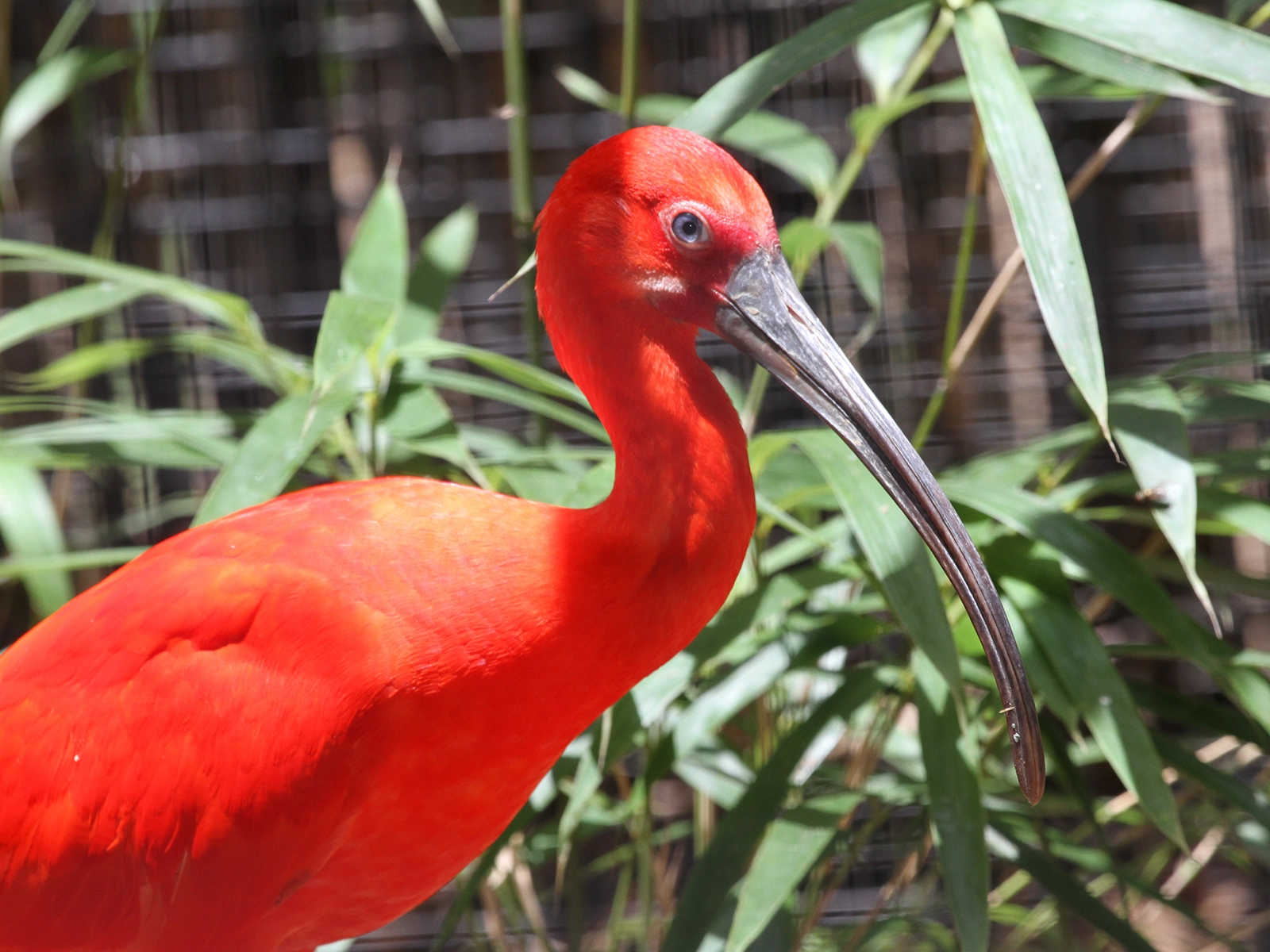Scarlet Ibis
Eudocimus ruber
Class
Aves
Order
Ciconiiformes
Family
Threskiornithidae

Aves
Ciconiiformes
Threskiornithidae
Northern South America from Venezuela to Brazil
Length: 25 in
Wingspan: 38 in
Weight: 2 lbs
Fresh and salt water estuaries, marshes, swamps, lakes and streams
Clutch of 3 - 5 eggs
Incubation: 19 - 23 days
Crabs, mollusks, small fish, frogs, insects, shrimp and other crustaceans, small snakes
Least Concern
The scarlet ibis gets its stunning pink, orange, and reddish color from the source of pigments in the algae and small crustaceans that it eats. The scarlet ibis' long, thin toes enable it to step easily through the water.
The scarlet ibis lives in large colonies that can include thousands of individual birds. They flock in large numbers for protection to feed during the day and roost at night. They gather in colonies of several hundred at breeding time, making nests in dense brush or on mangrove covered islands loosely packing twigs in treetops overlooking water.
While not threatened, they are hunted for their feathers. Loss of habitat for foraging, nesting and feeding as well as pollution have created problems.